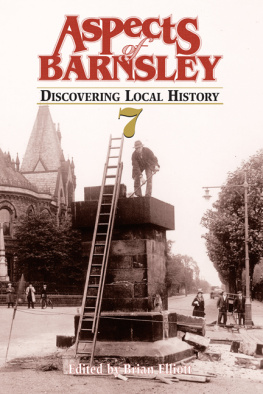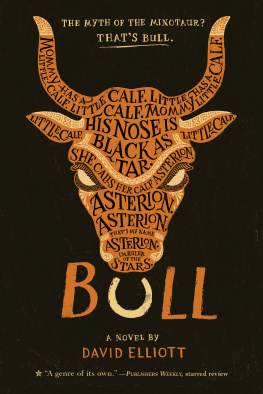Preface
Table of Contents
This book is an attempt to present the history of California in so simple and interesting a way that children may read it with pleasure. It does not confine itself to the history of one section or period, but tells the story of all the principal events from the Indian occupancy through the Spanish and Mission days, the excitement of the gold discovery, the birth of the state, down to the latest events of yesterday and to-day. Several chapters, also, are devoted to the development of Californias great industries. The work is designed not only for children, but also for older people interested in the story of California, including the tourists who visit the state by the thousand every year.
For her information the writer has depended almost entirely upon source material, seldom making use of a secondary work. Her connection with the old Spanish families has opened to her unusual advantages for the study of old manuscripts and for the gathering of recollections of historical events which she has taken from the lips of aged Spanish residents, always verifying a statement before using it. She has, also, from long familiarity with the Spanish-speaking people, been able to interpret truly the life of the Spanish and Mission period.
The illustrator of the history, Mr. Roy J. Warren, has made a careful study of the manuscript, chapter by chapter. He has also been a faithful student of California and her conditions; his illustrations are, therefore, in perfect touch with the text and are as true to facts as the history itself.
The thanks of the author are due not only to a host of writers from whom she has gained valuable assistance, and some of whose names are among those in the references at the end of the book, but to others to whom further acknowledgment is due. First of these is Professor H. Morse Stephens, whose suggestions from the inception of the work until its completion have been of incalculable advantage, and whose generous offer to read the proof sheets crowns long months of friendly interest. Secondly, the author is indebted to the faithful and constant supervision of her sister, Miss Agnes Elliott of the Los Angeles State Normal School, without whose wide experience as a teacher of history and economics the work could never have reached its present plane. The author also offers her thanks to Mr. Charles F. Lummis, to whom not only she but all students of California history must ever be indebted; to Mrs. Mary M. Coman, Miss Isabel Frazee, to the officers of the various state departments, especially Mr. Lewis E. Aubrey, State Mineralogist, and Mr. Thomas J. Kirk and his assistant Mr. Job Wood of the educational department; to Miss Nellie Rust, Librarian of the Pasadena City Library, and her corps of accommodating and intelligent assistants, and to the librarians of the Los Angeles City Library and State Normal School.
The passages from the Century Magazine quoted in Chapters V-IX are inserted by express permission of the publishers, the Century Company. Acknowledgment is due, also, to the publishers of the Overland Monthly for courtesy in permitting the use of copyright material; and to D. Appleton & Co. for permission to insert selections from Shermans Memoirs.
History of California
Table of Contents
Chapter I. The Land and the Name
Table of Contents
Once upon a time, about four hundred years ago, there was published in old Spain a novel which soon became unusually popular. The successful story of those days was one which caught the fancy of the men, was read by them, discussed at their gatherings, and often carried with them when they went to the wars or in search of adventures. This particular story would not interest readers of to-day save for this passage: Know that on the right hand of the Indies there is an island called California, very near the Terrestrial Paradise, and it is peopled by black women who live after the fashion of Amazons. This island is the strongest in the world, with its steep rocks and great cliffs, and there is no metal in the island but gold.
There is no doubt that some bold explorer, crossing over from Spain to Mexico and enlisting under the leadership of the gallant Cortez, sailed the unknown South Sea (the Pacific) and gave to the new land discovered by one of Cortezs pilots the name of the golden island in this favorite story.
This land, thought to be an island, is now known to us as the peninsula of Lower California. The name first appeared in 1542 on the map of Domingo Castillo, and was soon applied to all the land claimed by Spain from Cape San Lucas up the coast as far north as 44, which was probably a little higher than any Spanish explorer had ever sailed.
Sir Francis Drake, says the old chronicle, was the first Englishman to sail on the back side of America, and from that time until now California has been considered the back door of the country. This was natural because the first settlements in the United States were along the Atlantic seacoast. The people who came from England kept their faces turned eastward, looking to the Mother Country for help, and watching Europe, and later England herself, as a quarter from which danger might come, as indeed it did in the war of the Revolution and that of 1812.
During the last few years, however, various events have happened to change this attitude. Through its success in the late Spanish war the United States gained confidence in its own powers, while the people of the old world began to realize that the young republic of the western hemisphere, since it did not hesitate to make war in the interests of humanity, would not be apt to allow its own rights to be imposed upon. The coming of the Philippine and Hawaiian Islands under the protection of the United States, the Russo-Japanese war, which opened the eyes of the world to the strength of Japan and the wisdom of securing its trade, and the action of the United States in undertaking the building of the Panama Canal, are indications that the Pacific will in the future support a commerce the greatness of which we of to-day cannot estimate. With danger from European interference no longer pressing closely upon the nation, President Roosevelt in 1907 took a decided step in recognizing the importance of the Pacific when he sent to that coast so large a number of the most modern vessels of the navy. In fact, the nation may now be said to have faced about, California becoming the front door of our country.
It is well, then, to ask ourselves what we know about the state which is to form part of the reception room of one of the leading nations of the world.
It is a long strip of territory, bounded on one side by the ocean so well named Pacific, which gives freshness and moisture to the ever-blowing westerly winds.
On the other side is a mountain range, one thousand miles long, with many of its peaks covered with perpetual snow, holding in its lofty arms hundreds of ice-cold lakes, its sides timbered with the most wonderful forests of the world.
Few regions of the same size have so great a range of altitude as California, some portions of its desert lands being below sea level, while several of its mountains are over ten thousand feet in height. In its climate, too, there are wide differences as regards heat and cold, although its coast lands, whether north or south, are much more temperate than the corresponding latitudes on the Atlantic coast. The difference in the climate of the northern and southern portions of the state is more marked in the matter of moisture. Most of the storms of California have their beginning out in the North Pacific Ocean. They travel in a southeasterly direction, striking the coast far to the north in summer, but in winter extending hundreds of miles farther south. During November, December, January, and February they often reach as far south as the Mexican line. Then, only, does southern California have rain. The water necessary for use in the summer time is gained by irrigation from the mountain streams, which are supplied largely from the melting snows on the Sierras.















